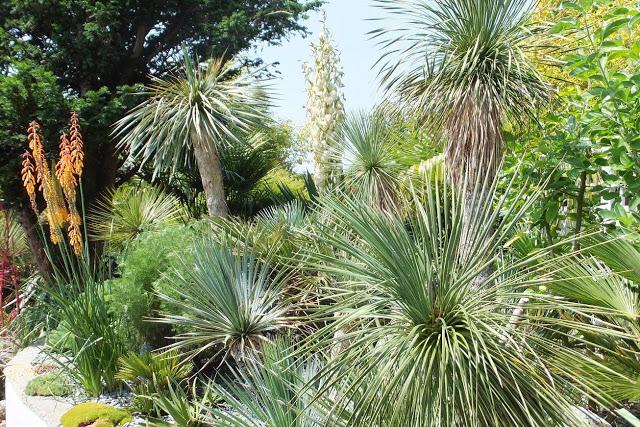
The Blue Bed enjoying some summer sun
But it has its own set backs: it is slow growing, unrooted trunked specimens can be finicky to re-root and re-establish, the roots are so delicate and brittle that a well rooted specimen in a pot is prone to being damaged upon transplantation, and flowering sets it back and can ruin its 'perfect head' for quite a reasonable amount of time (although flowering triggers it to split its head, resulting in a multi headed specimen which can make it look even more architectural than it is already).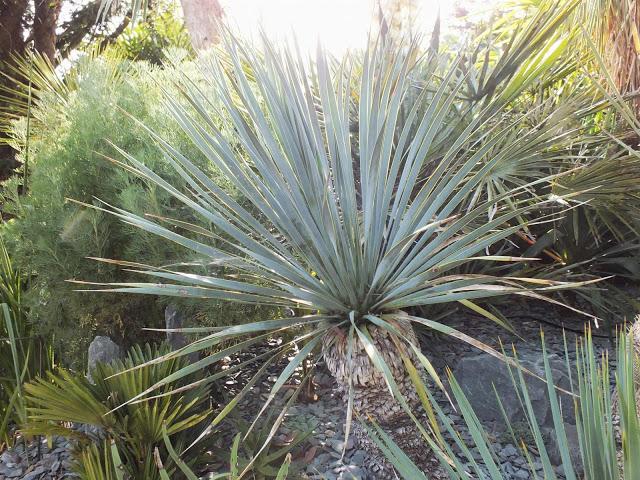
Yucca rostrata
Still worth persevering though, get it to establish and you're on to a definite winner of a plant that is very garden worthy and supposed to be really tough too: drought tolerant, winter hardy and able to withstand freezes and low temperatures, and apparently also able to withstand occasional water logging even during winter (as mentioned by Bob Brown of CGF in one of his talks).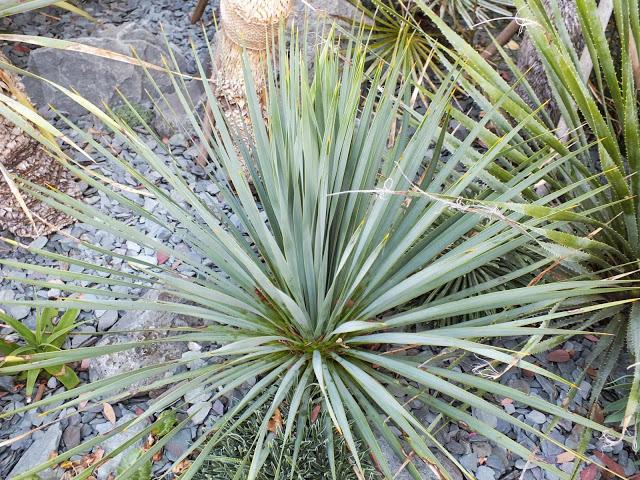
Yucca rostrata - Beautiful, even as a young plant with no visible trunk
Such a long introduction but this post is not about Yucca rostrata, it is about 'the other Blue Yucca', the one that has been unfairly tagged by others as the runner up of the above when it comes to the beauty and garden performance stakes department as far as trunked blue yuccas are concerned.It is about the wonderful Yucca linearifolia.
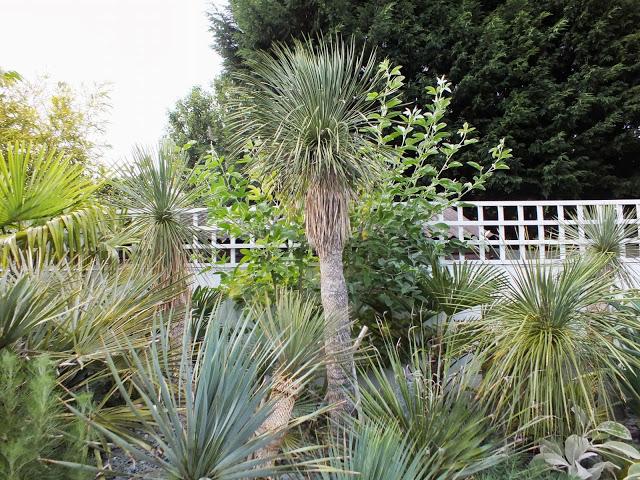
Yucca linearifolia - there are five of them in this photo
Imagine the above but not as finicky to grow, much easier to re-root from even nothing at all but just a little sliver of its original caudex, much quicker and easier to re-establish in its new planting site, grows a tad faster, and just as good looking and architectural as the above. That is Yucca linearifolia for you.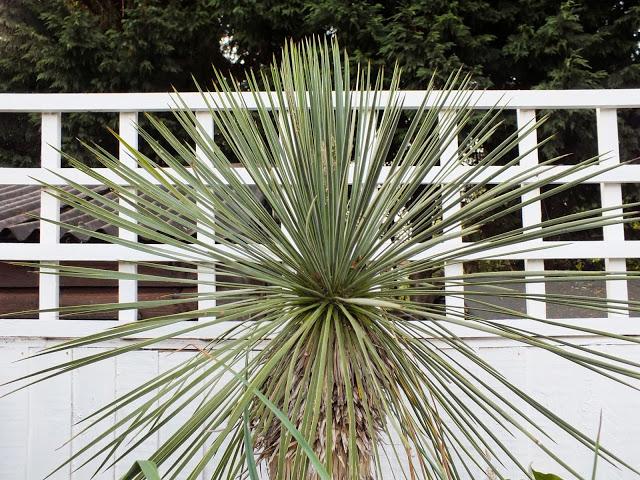
This Y. linearifolia had no roots at all originally but was planted straight to the ground to re-root in situ, which it successfully did. This is a blue form with a fatter trunk
The other blue yucca is much more than just a runner up, it holds its own right, at par with its more well known cousin. And with its better qualities at re-establishing perhaps it makes it a more rewarding plant to have and to own in that respect.Saying that, at one point Yucca linearifolia (syn. Y. linearis) was considered a variety of Yucca rostrata (ex Yucca rostrata var. linearis) but was later on reclassified into it's own separate species. Appearance wise, the two does look similar but the former has noticeably narrower, much longer leaves with a slight twist and bluish green in color. The latter has much broader, slightly shorter leaves and tends to have a much stronger blue colouration. In that respect, perhaps Yucca rostrata deserves the word blue more than the other but in reality specimens of both can have leaves anywhere within the spectrum from light blue to mid green.
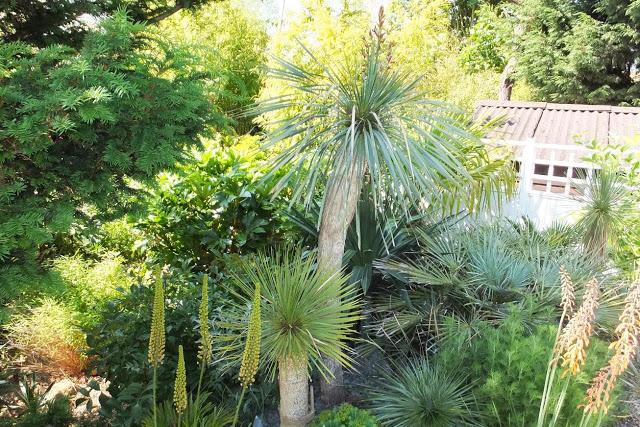
A duo of Y. rostrata with one looking more blue than the other
Confusing?In the nursery trade here Yucca linearifolia can sometimes be sold under two forms: more common blue leaf form (with a slimmer/slender trunk) and the rarer green leaf form (with supposedly fatter trunk). A third one also exists called 'Galeana' which was coined by Dutch nursery Tropical Centre of specimens they have found to have much bluer and longer leaves than the more common blue leaf forms. Personally I take this all with a pinch of salt as I have both forms and their traits seems to cross over especially with the passing of time.
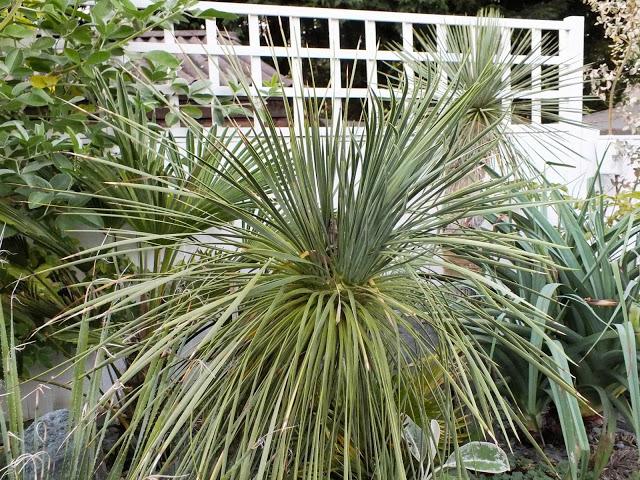
Y. linearifolia - blue leafed form with a slender trunk. Note the old flower stalk which it sent out last year
Most of our blue leaf forms do have slender trunks but I have a blue leaf form that has a much fatter trunk compared with the rest (see above), and I have a green leaf form that is looking more blue at the moment (below)....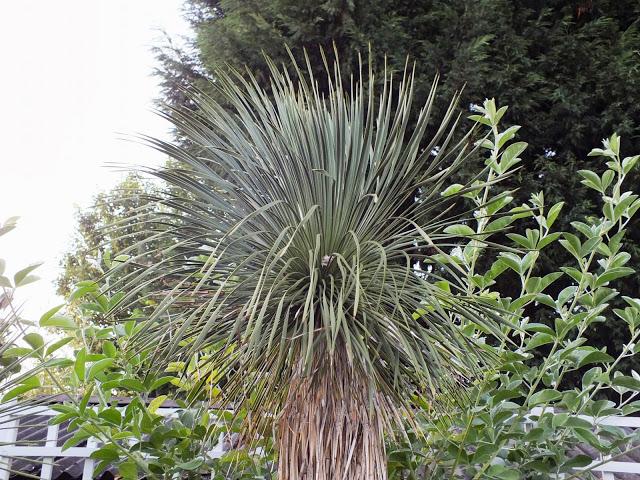
Y. linearifolia - a green leaf form that is looking rather blue this year
As for the Galeana, that seems to look distinct from the rest with a trunk size more akin to the size of the usual blue leaf form but the leaves do seem much broader than any of the rest (but not as broad as to look like a Y. rostrata) and noticeably longer too. However time will tell for our specimen flowered last year and looked all scruffy then and is just starting to look good again this year.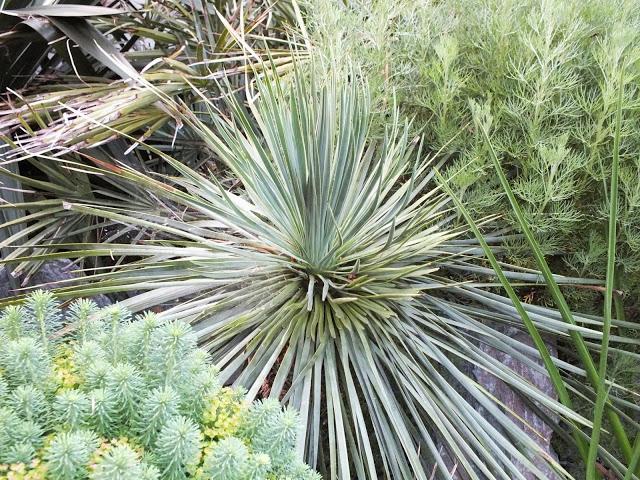
Yucca linearifolia 'Galeana' - it flowered last year which took a toll on its appearance, and is only starting to look good again this year
Another thing is the ability to become a multi headed specimen. Y. rostrata tends to (but not always) split on the main growing point after flowering at the point where the inflorescence has emerged hence able to become a multi headed specimen with the passing of time. However, it rarely offsets from the base. Y. linearifolia however rarely splits on the growing point after it has flowered and just carries on producing a new flush of leaves from the same point, remaining as a single headed specimen and continues to get taller. It does however send out offsets from the base, adjacent to the mother plant to eventually become a multi trunked specimen instead.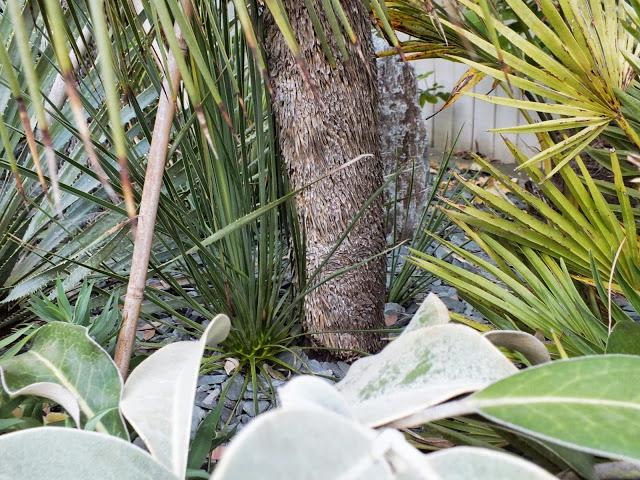
Offsets galore at the base of one of Yucca linearifolia. So looking forward to seeing them gain size through the years!
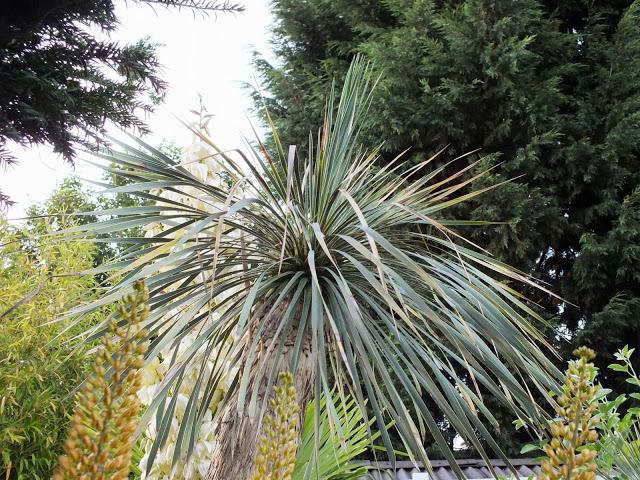
Y. rostrata - this one flowered last year too and is now sending out new growth. Will it split or not? We will soon find out..
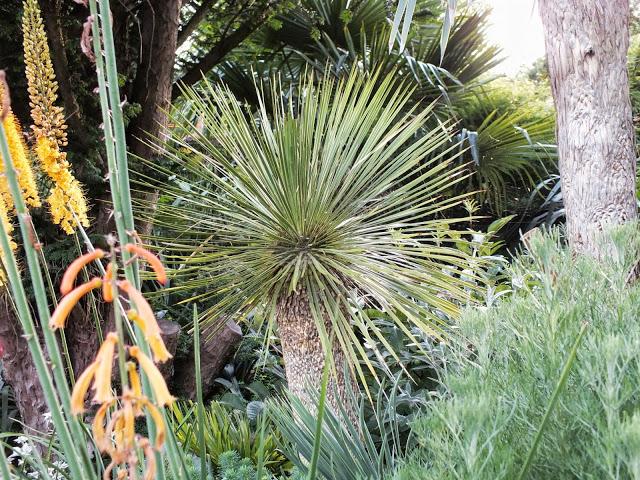
Y. rostrata - a not so blue one
So which one would you prefer, multi headed or multi trunked? Me being me I like both...A few years ago I had a chat with a plantsman who regularly goes on a plant hunting trip in Mexico and he said that the Y. linearifolia he has in the wild are all multi trunked and have yet to see a multi headed one. That doesn't mean though that he dismissed the possibility of one having several heads as in theory that is possible. That was then though, I don't know if he has spotted any on his more recent trips because saying that, more recently I have been aware of a few specimens sold that has more than one head (and with a hefty price tag to match, the price of rarity!).
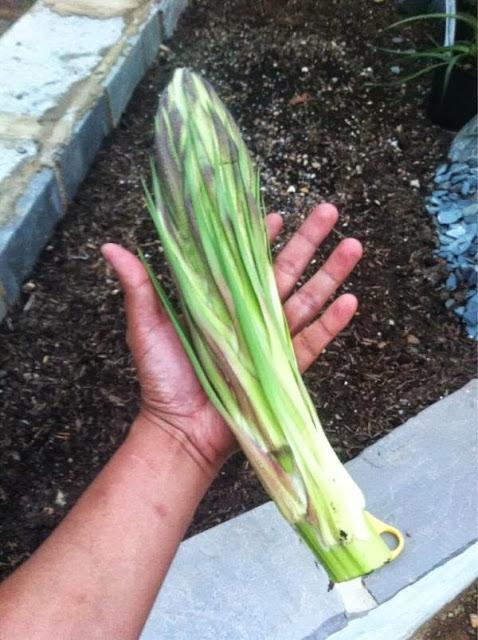
Flowering, although spectacular does takes it toll on the appearance of a yucca. Cutting it off as it emerges will not stop it from looking scruffy, but it will stop it from using its energy into flowering into re-rooting instead. This is especially beneficial if a specimen is not established on the ground yet. This is one that I cut off last year
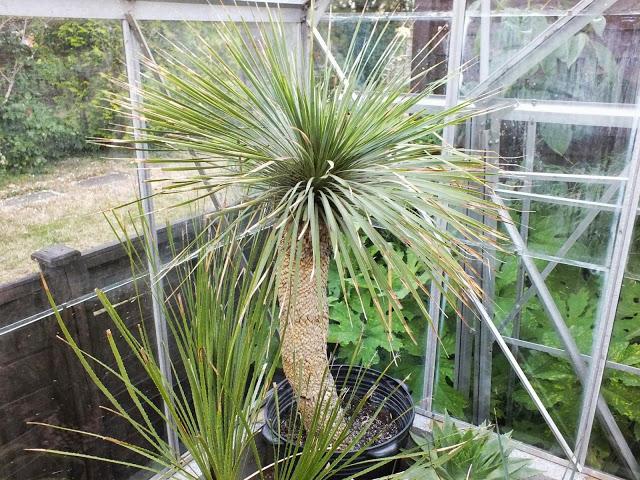
Double whammy - this Y. rostrata had no roots and flowered in the same year but with care it is now well rooted in its pot.
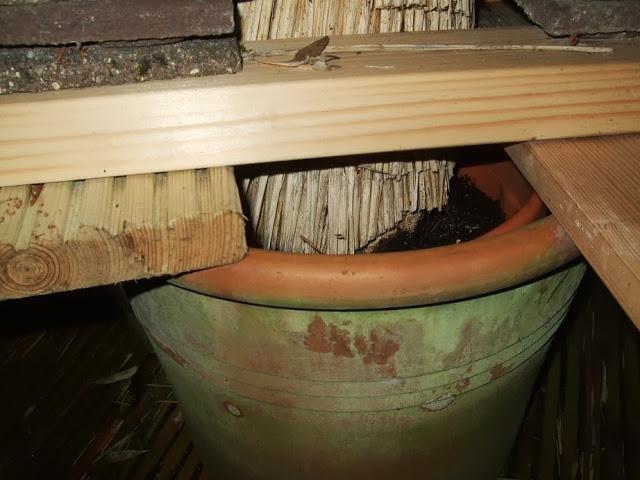
A post on re-rooting Yucca rostrata and linearifolia will be done soon
BTW, I will blog about how I re-root yuccas on a separate post which hopefully I can do soon!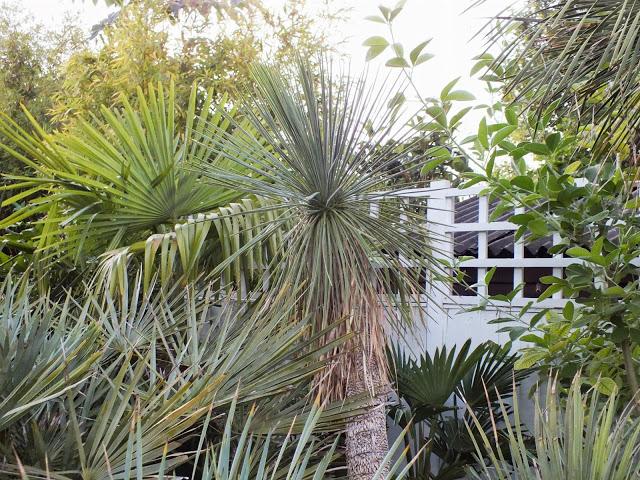
The Other Blue Yucca
There are several blue yuccas out there (like Y. rigida, Y. queretaroensis, Y. schottii, just to name a few) but Y. rostrata remains the most popular. But if you like/love the look of it but find it infuriating to establish and get to look good in your garden, or if you are limiting yourself to just a few choice ones that will look better faster then go for 'the other Blue Yucca' - Y. linearifolia. Such a rewarding plant deserves to be more popular.Mark :-)

